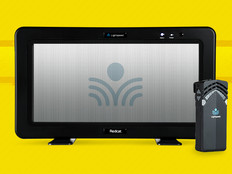Take Service Learning Online by Developing a Darfur Website Project
Students use technology to raise awareness about the conflict in Darfur.
How do you make learning authentic in the elementary grades? Sometimes it just happens. My third-graders were discussing the anniversary of the founding of the United Nations, and I happened to see a program the night before about a child who ran from his village in Darfur to the refugee camps in Chad. I used this to show how UNICEF gets involved in international conflicts. The kids wanted to know more. They also wanted to do something about it. This is how the Darfur website project was born.
Lesson Description: The class was divided into groups of researchers, writers and artists. Every student had an opportunity to write.
The website consisted of six components:
- Learn More: I created an online scavenger hunt to help students understand the conflict in Darfur. Two students synthesized this material and wrote an introduction. Student researchers provided links to additional information.
- Listen to Our Podcast: A student interview with a volunteer from SaveDarfur.org was recorded as a podcast and posted on the website.
- Write Letters: Each student wrote a letter to a member of Congress or an international leader asking for their attention to the genocide in Darfur. Two students wrote a letter to visitors explaining the importance of awareness.
- Darfur Reflections: Each student wrote a paragraph reflecting on the conflict and why it was important to do something about it.
- Give: Links were given to a number of organizations that provide online donation options.
- About Us: The kids wanted everyone to realize that being third-graders doesn't mean that they can't make a difference.
Subject Areas: This project integrates social studies and research with expository, reflective, interview and letter writing.
Curriculum Standards:
ISTE National Educational Technology Standards for Students (NETS•S)
- Students demonstrate creative thinking, construct knowledge and develop innovative products and processes using technology.
- Students use digital media to communicate and work collaboratively.
- Students apply digital tools to gather, evaluate and use information.
- Students use critical-thinking skills to plan and conduct research, manage projects, solve problems and make informed decisions using appropriate digital tools and resources.
- Students understand human, cultural and societal issues related to technology, and practice legal and ethical behavior.
- Students demonstrate understanding of technology concepts, systems and operations.
Resources:
- Kids Galore Helping Kids in Darfur: w3.shorecrest.org/~thirdgrade/GR3/Darfur/index.htm
- Resources for Podcasting: edweb.sdsu.edu/courses/edtec700/POD/resources.htm
- National Service-Learning Clearinghouse: www.servicelearning.org
- Teachers First Wiki Walk-Through: www.teachersfirst.com/content/wiki
Grading Rubric: Individual writing was assessed using a Six Traits rubric. A project rubric was used to assess overall project participation, ability to work independently as a group and quality of work.
Teaching Tips
- Empower your students to find a cause for which they have a true passion.
- Organize your class into efficient groups. If everyone has a responsibility, you can complete the project in less time and with less impact on your other curricular areas.
- Use a wiki in place of an actual website. Wikis are easy to use, and editing can be limited to your students.
- Don't be afraid to experiment and let the kids know. If something doesn't work, simply change it.
- Don't be afraid to contact experts. They are always happy to help classroom teachers.






